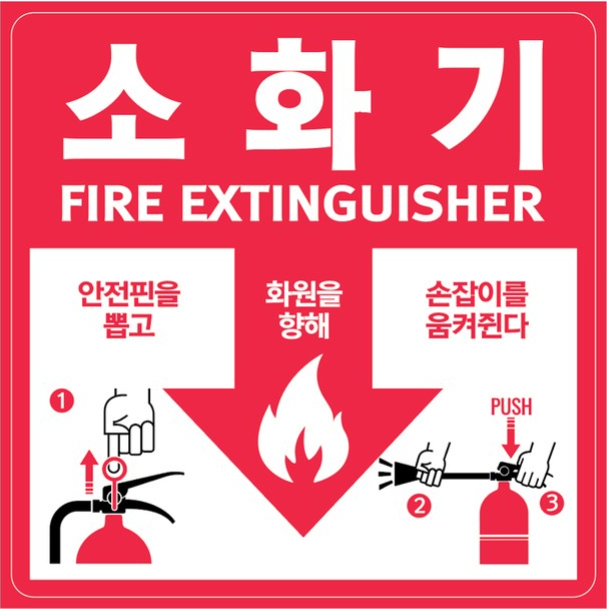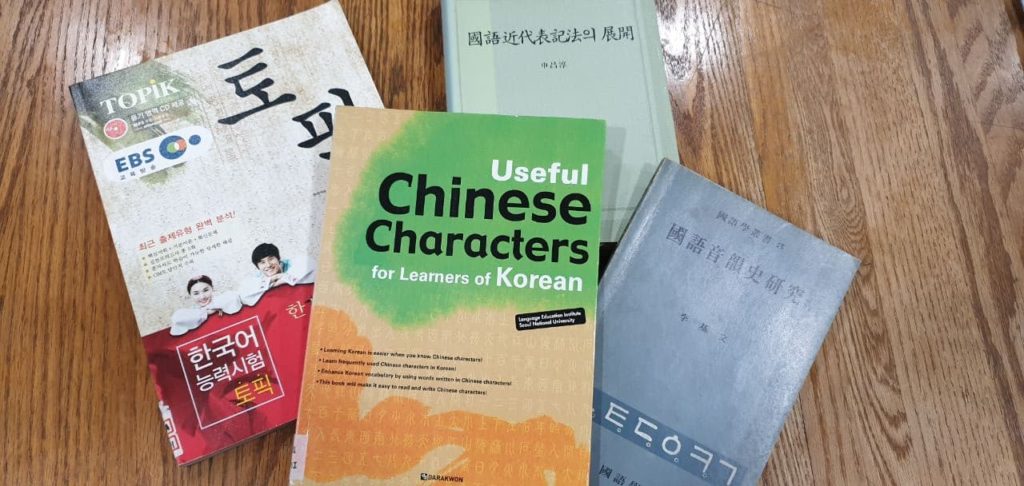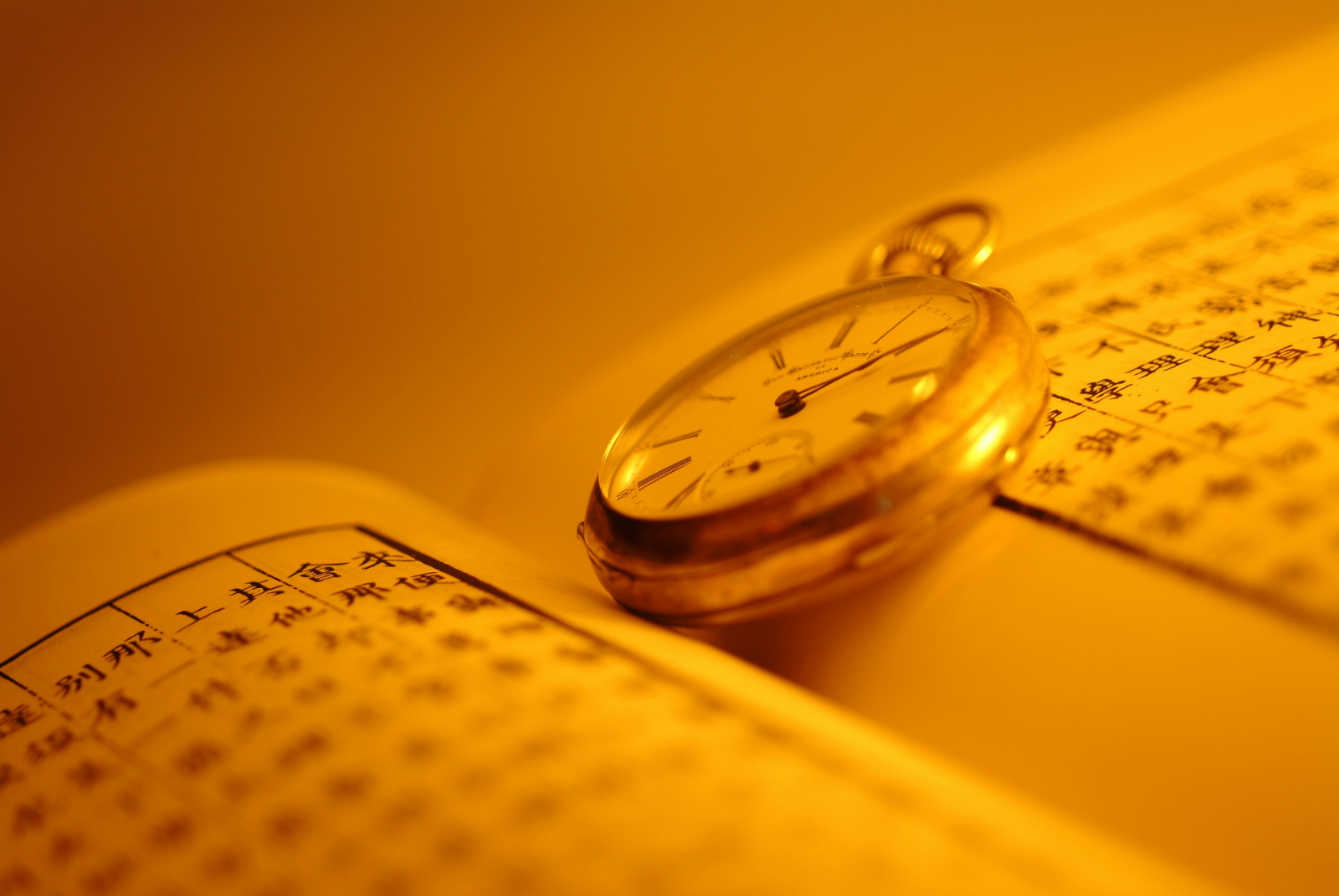How to Study Chinese Characters
By Stephen Kagarise
Hanja (한자, 漢字), Chinese characters are the basic building blocks of many Korean words. Each hanja is a kind of pictograph, or picture with its own specific meaning. For example, the hanja 火 has the meaning 불, or fire. The pronunciation of this hanja is 화. This is the 화 in 소화기 (so-hwa-gi), which means fire extinguisher. 소 means to put out, and 기 is a machine. All three syllables of 소화기 are from hanja. Although 소화기 is a common enough word that you may know it without learning hanja, there are many words you will encounter as a Korean language learner that you will not be familiar with and are best approached by tearing them down into their component parts. Doing this will help you understand a word much better than simply looking it up in the dictionary, assuming it is even listed, which in some cases it is not.

To study hanja, you need a hanja dictionary and a specially designed hanja notebook, which are both available at most bookstores with a stationery section. The dictionary will probably have the hanja arranged by level. There are eight levels, plus two special levels. The lowest level is Level 8, which has 50 of the most basic and common hanja, like 火. This is where you will start. The notebook has 100 rectangular boxes on each page. Each box has a horizontal line dividing the large upper part from the small lower part. The upper part is where you draw the hanja. The lower part is where you write the meaning and pronunciation, both in Korean.
To learn hanja as fully as possible, you want to practice going from the picture to the meaning and pronunciation, and then back again from the meaning and pronunciation to the picture. This means you will be able to both read and write hanja. You may think there is no way you can remember how to draw each of the hanja, especially if you learn 2000 of them. Actually, it is not too difficult. It just takes review. The trick is figuring out the most efficient way to conduct your review. The purpose of this article is to show the method I used to learn about 1800 hanja in a year and a half. Like learning Korean, all it takes is some faith in yourself and dedication. I think that learning hanja is key for anyone who wants to pass the TOPIK Level 6.
Filling in one page a day of your hanja notebook is enough. This is 100 boxes. If you have spent a few weeks studying Level 8, you can review all 50 hanja every day. In fact, you can review them all twice. But what if you have also studied Level 7, and now need to review 150 hanja? The trick is to allocate a certain number of boxes to each level, based on their percentage of the total. You would allocate 100/150, or 2/3 of the boxes to Level 7, and 50/150, or 1/3 of the boxes to Level 8. In other words, 70 boxes to Level 7, and 30 boxes to Level 8. In this way you would be able to cycle through the hanja in both levels in two days. If you have also studied Level 6, for a total of 300 hanja, then you would allocate 150/300, or 1/2 of the boxes to Level 6; 100/300, or 1/3 of the boxes to Level 7; and 50/300, or 1/6 of the boxes to Level 8. In other words, 50 boxes to Level 6, 30 boxes to Level 7, and 20 boxes to Level 8. So it would take you three days to cycle through the hanja. This may seem overly complicated, when you could just review about 100 hanja a day, paying no attention to level. The reason that allocating boxes by level is important is because it allows you to spend less time reviewing the hanja in earlier levels that you have already reviewed many times before and know better. You can give those levels less than their fair share of boxes, and give the excess to levels you have studied more recently and need to review more often. This way you are cycling through the less familiar hanja more often than the hanja you know well, which helps to fix them in your memory.

Using this system, I was able to study three new hanja a day. It takes about an hour to fill in one page of the notebook. If you keep up this pace for a year, you will have learned 1000 hanja, but only spent 20 minutes on each one. That includes the time spent drawing, because you will be able to both read and write hanja. A year may be more than enough to meet your needs, but if you want to rival and surpass your Korean friends, I recommend attempting Level 3, for a total of 1800 hanja.
We have discussed how to divvy up the boxes in the notebook, but not how to use them. The first six boxes at the top of the page are dedicated to the three new hanja you will learn every day. Draw the hanja, writing its meaning and pronunciation underneath, and then leave the box beside it blank. The other 94 boxes are dedicated to review. You should have already settled beforehand how many will be allocated to each level you are reviewing. For each hanja, look at its picture in the dictionary, covering the meaning and pronunciation with your finger. Try to recall the meaning and pronunciation from your memory, saying them aloud if you want. Check to see if you are correct, then write these in the lower part of the box. Do this for all 94 hanja, filling out the page. Now you are going to go from the meaning and pronunciation back to the picture. Close your dictionary. Look at each meaning and pronunciation you have written, and draw the corresponding hanja. When you have reached the bottom of the page, go back to the top and review the three new hanja, filling out the empty box next to each.
So that is all there is to it. Is it a lot of work for nothing? It depends on what your goals are, but there are many advantages to learning hanja. I have already mentioned how they provide a deeper knowledge and appreciation of the Korean language, giving you a sixth sense of what a word means even if you have never encountered it before. They will make you a monster on the reading section of the TOPIK. Knowing hanja can also help you learn Japanese kanji and Chinese, if you want to achieve the trifecta of northeast Asian languages. For those who are less goal-oriented, there is something relaxing and meditative about drawing hanja. Eventually, you will start to see patterns, allowing you to guess at the meaning and even the pronunciation, just by looking at the picture.
The Author
Stephen Kagarise has been living in Gwangju for the past nine years. He has been busy the past two years hiking and biking around Korea.







